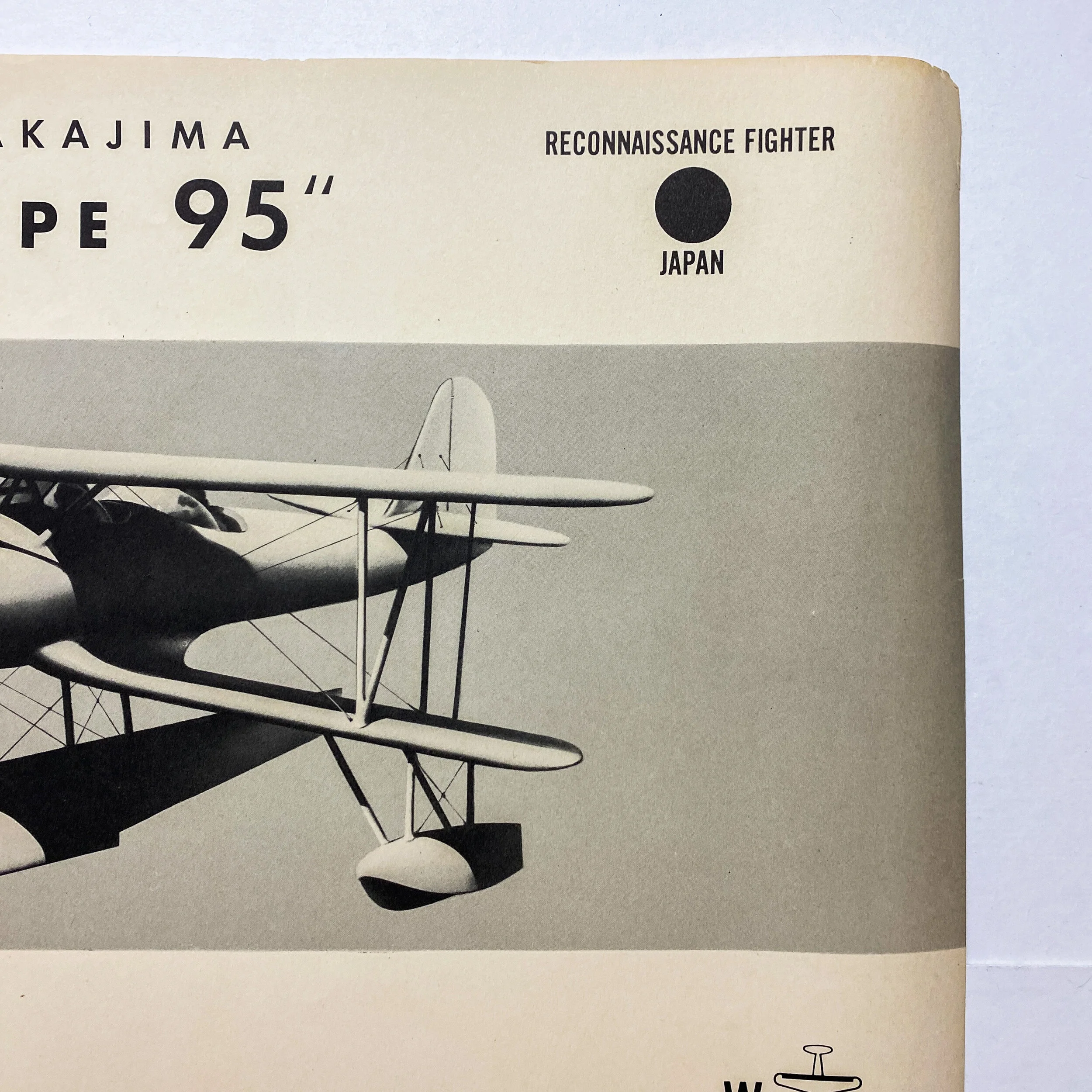Japanese Reconnaissance Fighter Nakajima Type 95 'Dave' Aviation Training W.E.F.T.U.P. ID Posters








Japanese Reconnaissance Fighter Nakajima Type 95 'Dave' Aviation Training W.E.F.T.U.P. ID Posters
Size: 19 x 25 inches
This original ‘RESTRICTED’ aircraft identification poster was published by the U.S. Naval Aviation Training Division Feb. of 1943 and was printed by the U.S. Government Printing Office 1944. This poster was posted as a training tool as well as an in theater ID poster to help U.S. and other Allied pilots, bomber crews and Naval personal to identify Allied and enemy aircraft. W.E.F.T.U.P. or Wing, Engine, Fuselage, Tail, Undercarriage, Peculiarities was a system set up for the purpose of aircraft identification and recognition.
World War II saw some of the first introduction of these aircraft ID poster to prevent friendly fire and more accurate plane recognition in combat. It was believed these posters alone could save countless lives from friendly aircraft-on-aircraft or friendly anit-aircraft fire. These posters also could cut down precious second pilots, bomber gunners, and naval gun crews would have to ID a plane flying towards them intern saving their lives by shooting first.
Each poster provides the silhouettes, dimensions, and relevant information to educate both air and ground personnel in aircraft identification. Immediate identification of aircraft, friendly or not, was essential in order for the observer (whether in the air e.g., pilot, gunner, or patrol observer, or on the ground, e.g., anti-aircraft crew) to determine his next course of action (e.g., acknowledge, attack, evade, or report). Each poster details a large clean sky and background image of the specified aircraft located as the main top imagine on the poster. It also contains important ‘peculiarities’ such as where certain gun emplacements are located, other special aircraft features, as well as wing and length measurements.
Japanese Reconnaissance Fighter Nakajima Type 95:
The Nakajima E8N was a Japanese ship-borne, catapult-launched, reconnaissance seaplane of the Second Sino-Japanese War. It was a single-engine, two-seat biplane with a central main-float and underwing outriggers. During the Pacific War, it was known to the Allies by the reporting name "Dave". The E8N was developed as a replacement for the same company's E4N and was essentially an evolutionary development of the earlier reconnaissance seaplane, with revised wings of lesser area and taller tail surfaces. Seven prototypes were constructed, under the company designation MS, first flying in March 1934. These were duly engaged in comparative trials against competitors from Aichi and Kawanishi.
The MS was ordered into production, designated Navy Type 95 Reconnaissance Seaplane Model 1 in October 1935. A total of 755 E8Ns were built by Nakajima and Kawanishi, production continuing until 1940. It was subsequently shipped aboard all the capital ships then in service, 16 cruisers and five seaplane tenders.
It was used successfully in the Second Sino-Japanese War not only for reconnaissance, but also for dive-bombing and artillery spotting.
One E8N was purchased in early 1941 by the German Naval Attache to Japan, Vice-Admiral Paul Wenneker, and dispatched on board the KM Münsterland to rendezvous with the German auxiliary cruiser Orion at Maug Island in the Marianas. The meeting occurred on the 1st of February, 1941, and Orion thus became the only German naval vessel of the Second World War to employ a Japanese float plane.
Some aircraft remained in service with the fleet at the outbreak of the Pacific War, and one flew reconnaissance from the battleship Haruna during the Battle of Midway, but they were soon replaced by more modern aircraft such as the Aichi E13A and the Mitsubishi F1M, being reassigned to second-line duties.